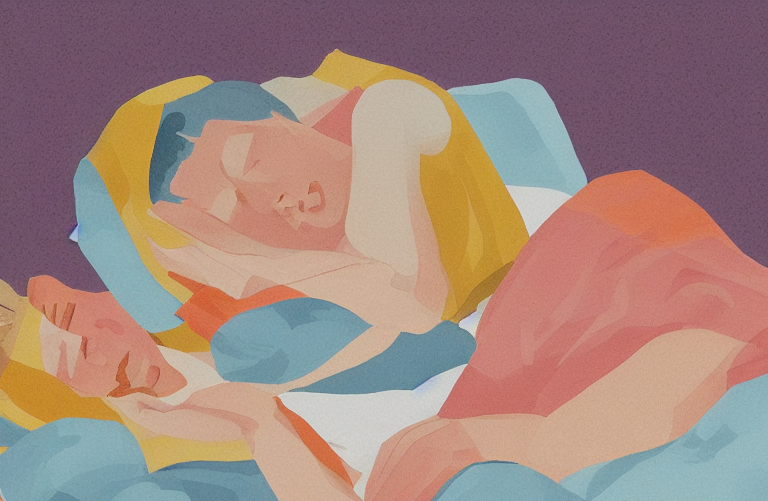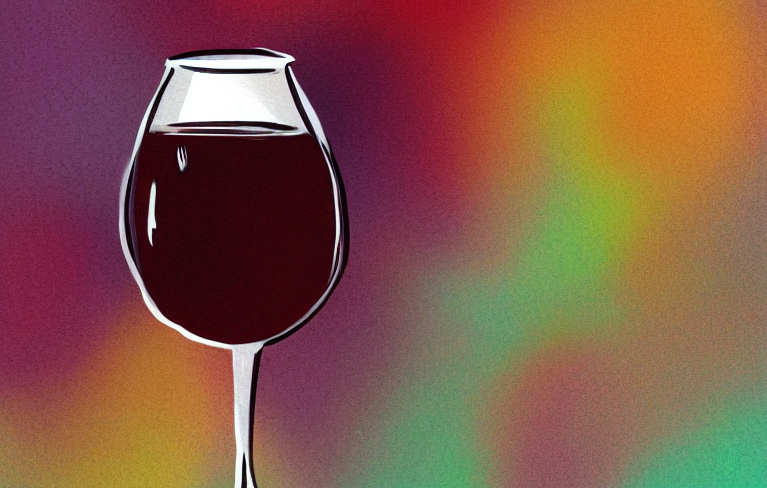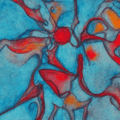After using stimulants, such as amphetamines, cocaine, or mephedrone it can be difficult to calm down and fall asleep. Subsequently, I endeavored to compile a list of the most prevalent, convenient, and effective methods. Unfortunately, it cannot be asserted with certainty that all of these techniques shall prove efficacious for every individual.
In instances where stimulants are consumed in substantial quantities, there may arise situations in which only potent prescription drugs can offer any significant relief. We shall elaborate on such instances as well. In other cases, by adhering to general guidelines for Harm Reduction, it is feasible to achieve restful and restorative sleep via simple solutions. Here are some of them.
Sleep hygiene

If you’ve taken stimulants and are having trouble falling asleep, there are several sleep hygiene activities that can help promote relaxation and improve your chances of falling asleep faster.
Create a relaxing sleep environment. Make sure your sleep environment is conducive to sleep by keeping the room cool, dark, and quiet. Use comfortable bedding and invest in a comfortable mattress and pillows.
Limit screen time before bed. Avoid using electronic devices like phones, tablets, and computers before bed, as the blue light they emit can disrupt your sleep cycle.
Exclude or minimize other stimuli. loud music, bright lights, a large number of people around, active movements, important things, etc.
Give yourself time to wind down and relax.
Progressive muscle relaxation (PMR)
This technique involves tensing and relaxing different muscle groups to promote relaxation. It can help to reduce physical tension and promote a sense of calmness. Pros: It is a simple technique that can be done anywhere.
It should be noted that MPR may be appropriate for use after the consumption of stimulants. It is imperative to remain mindful of one’s current physical state, level of hydration, as well as the presence or absence of muscle spasms and pain. If the condition does not permit, it is advisable to refrain from this course of action.
Here’s how Progressive Muscle Relaxation works:
- Find a quiet and comfortable place where you can lie down or sit comfortably.
- Close your eyes and take a few deep breaths to help you relax.
- Start by tensing the muscles in your feet and toes as tightly as you can for a few seconds, then release the tension and let your muscles go limp.
- Move up to your calves, tensing the muscles as tightly as you can for a few seconds, then releasing the tension and letting your muscles go limp.
- Continue to move up your body, tensing and relaxing each muscle group as you go. You can include your thighs, buttocks, stomach, chest, back, arms, hands, neck, and face.
- As you tense each muscle group, focus on the sensation of tightness and tension in your muscles. Then, as you release the tension, focus on the sensation of relaxation and how your muscles feel loose and limp.
- Take deep breaths as you go, inhaling deeply as you tense the muscles and exhaling deeply as you release the tension.
- Continue the exercise for 10-20 minutes, or until you feel fully relaxed.
Deep breathing exercises
Deep breathing exercises can help to slow down your heart rate and promote relaxation. Pros: It can be done anywhere and is easy to learn.
In the case of insomnia from stimulants, this exercise may be useless. Especially if large doses were taken, the effects of the substance are still clearly manifested, and the person feels anxiety and difficulty breathing. If it is inconvenient or uncomfortable for you to perform an exercise, and instead of relaxation comes panic and unpleasant sensations, it is better to stop the exercise and try another method.
Deep breathing exercises are a relaxation technique that involves taking slow, deep breaths to promote relaxation and reduce stress. Here’s how it works:
- Find a quiet and comfortable place where you can sit or lie down comfortably.
- Close your eyes and take a few deep breaths to help you relax.
- Focus your attention on your breath, and start to breathe in slowly through your nose.
- As you inhale, expand your belly and chest to take in as much air as you can. Count to three as you inhale.
- Hold your breath for a few seconds, then slowly exhale through your mouth. Count to three as you exhale.
- As you exhale, contract your belly and chest to expel as much air as you can.
- Repeat this process for 5-10 minutes, or until you feel fully relaxed.
Herbal remedies

Certain herbal remedies, such as chamomile tea or valerian root, may have a sedative effect and help to promote sleep. Pros: They are natural and generally safe to use. Cons: They may not be effective for everyone. They may also be ineffective for sleep after large doses of stimulants.
Here are some examples of how certain herbals work as sedatives:
Valerian root: Valerian root contains compounds that have sedative effects on the body by increasing the activity of the neurotransmitters gamma-aminobutyric acid (GABA) and serotonin, which help to reduce anxiety and promote relaxation.
Chamomile: Chamomile contains compounds that are more likely to have a relaxation an anti-anxiety effect than a hypnotic. However, there is evidence that chamomile also improves sleep. But the study took into account the long-term intake of chamomile extract in capsules.
Passionflower: P. incarnata is thought to affect the central nervous system (CNS) by modulating the gamma-aminobutyric acid system. Specifically, passionflower extract has been found to exhibit partial agonistic activity at the benzodiazepine receptor, which is involved in regulating anxiety and other CNS functions.
Lavender: Multiple studies have shown statistically significant improvements in sleepiness, deep sleep period time, rapid eye movement, and relaxation with the use of lavender oil. Overall, the evidence suggests that direct inhalation of lavender oil may be beneficial before sleep for sleep problems.
Herbal remedies can be a useful tool for promoting relaxation and reducing anxiety and stress. However, it’s important to note that not all herbal remedies are safe or effective for everyone, and some can interact with prescription medications.
Prescription medications

Prescription medications, such as benzodiazepines or non-benzodiazepine sedative-hypnotics, may be prescribed by a healthcare provider to promote sleep. Pros: They can be effective in promoting sleep. They are also very effective even after high dosages of stimulants. Cons: They can be habit-forming and may have side effects. They are serious and strong medications. Here’s how they work:
Benzodiazepines: Benzodiazepines work by enhancing the activity of GABA in the brain. They bind to specific receptors on the GABA receptor complex, which opens chloride ion channels and allows chloride ions to enter the neuron. This hyperpolarizes the neuron and reduces its ability to fire, which helps to reduce anxiety and promote relaxation.
Non-benzodiazepine sedative-hypnotics: such as Zolpidem and Zaleplon, work by binding to specific receptors on the GABA receptor complex that is distinct from the benzodiazepine binding site. This also enhances the activity of GABA in the brain, which helps to reduce anxiety and promote relaxation.
Other sleeping pills. This includes many medications: from some tricyclic antidepressants (Doxepin), barbiturates, and antihistamines (Doxylamine), to relatively new medications like orexin receptor antagonists. However, the number of possible adverse reactions and conditions does not allow me to continue, otherwise, this article will turn into a treatise. In the future, I will try to reveal this topic in more detail.
Both benzodiazepines and non-benzodiazepine sedative-hypnotics can be effective at treating anxiety and insomnia. However, they can also have side effects and risks, especially with long-term use. Common side effects include drowsiness, dizziness, and impaired coordination. They can also be habit-forming and can cause withdrawal symptoms when stopped abruptly. Remember this and do not use them without consulting a doctor and absolutely necessary.
A few words about alcohol

Of course, it’s not recommended to use alcohol as a sedative after taking stimulants. While alcohol can initially cause drowsiness and promote relaxation, it can also disrupt your sleep cycle and lead to poor sleep quality. Moreover, combining alcohol with stimulants can be dangerous, as the stimulant effects can mask the sedative effects of alcohol, leading to potential alcohol poisoning.
However, there may be instances in which an individual is unable to fall asleep despite having no access to medication or herbs, and relaxation techniques are ineffective. In such circumstances, consuming a small quantity of alcohol can aid in relaxing the body and mind, reduce anxiety, and facilitate sleep.
It is impossible to leave this part of the text without some warnings:
- It is crucial to consume alcohol in moderation, preferably in the form of weak alcoholic beverages such as diluted wine.
- It should only be consumed after the active effects of the stimulant have worn off.
- Combining excessive amounts of alcohol with stimulants or taking them together can be incredibly perilous.
- Additionally, alcohol should never be mixed with medical sedatives or sleeping pills under any circumstances.
If you’re struggling to fall asleep after taking stimulants, it’s best to focus on herbals and non-pharmacological methods of promoting relaxation and sleep.
Summary
Stimulants very often lead to sleep problems. After all, this is their direct action – to activate the work of the CNS. However, we critically need sleep, and in order to rid ourselves of health problems, it is enough to rest or gain strength before the working day, sometimes we will have to use some of the methods in order to fall asleep after stimulants.
As a rule, if the principles of Harm Reduction for stimulants are followed, sleep problems mostly can be solved in the simplest way – by observing sleep hygiene. In other cases, medications and even prescription substances may be needed to stop excessive stimulation. In my opinion, it is better to delay this moment as much as possible, not to use strong drugs unnecessarily, and take care of your sleep in advance.
✔️
This marks the finish of today’s session. It is my hope that this piece was enlightening.
If you desire to advance the growth of this blog, I suggest the following actions:
- Follow my social media accounts (Twitter).
- Circulate a link to this article among your associates.
- Give recognition to this blog on relevant platforms or discussion groups.
Should you identify any necessary additions or corrections in this article, feel free to initiate a dialogue with me via Telegram. I am always open to communication.
I express my gratitude for your valuable time and consideration 🛌




